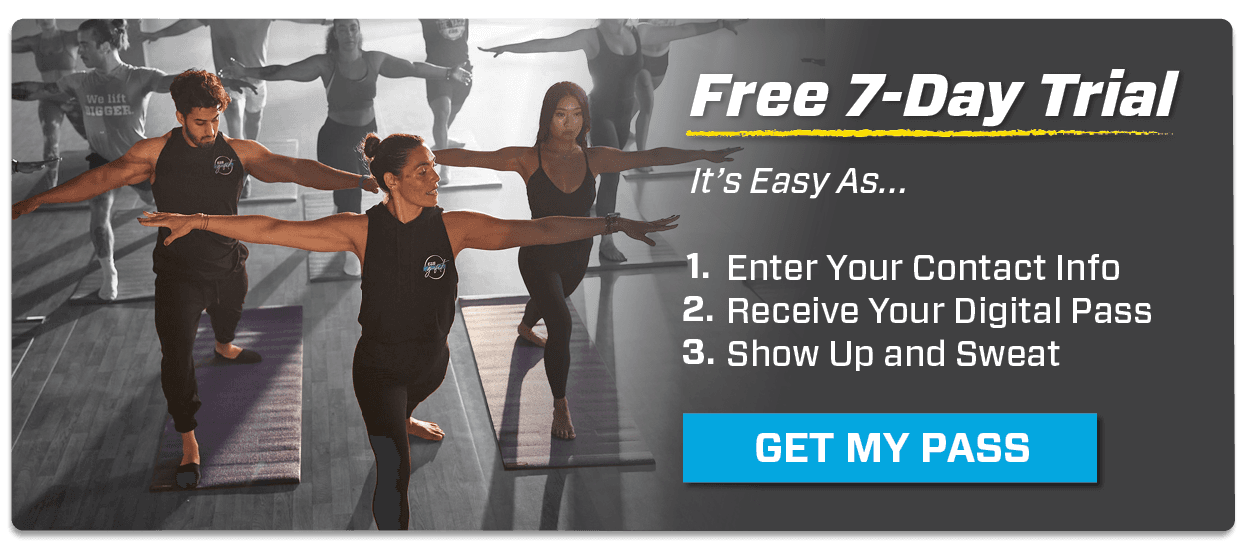Why Rest Days Are Important for Fitness Training & Athletes
Fitness Tips
Aug 03, 2023 • 8min read
Are you aware of the importance of rest days when it comes to improving your gym experience, achieving faster results and preventing injuries? This may sound surprising, but you can accomplish all of these things by giving yourself time to rest. The benefits of rest days are difficult to overstate. So, let’s explore the importance of rest days and learn about the benefits of taking a day off from the gym.
Why Are Rest Days Important?
If you force any machine to consistently run at full power, it will eventually malfunction. Your body works the same way. Although exercise is great to keep your mind and body in good health, no matter how well-oiled your body may be, there are limits to how much your body can handle. Working out at the gym puts your body under mechanical and metabolic stress. So, when someone asks “Are rest days important?” the answer is a resounding yes!
REST AND RECOVERY DAYS HELP REBUILD YOUR MUSCLES
When you engage in resistance training (also called strength training or weight training), you are creating small tears in your muscle fibers. Don’t worry though, this is a normal and necessary step to build muscle. As you rest, your body repairs the muscle fibers, building them back stronger. This is how you improve your strength over time and also how muscles increase in size (hypertrophy).
REST DAYS GIVE YOUR BODY TIME TO ADAPT
Your body is an amazing machine– it continually responds and adapts to the workouts you put it through. During workout rest days, not only do your muscles improve, but so do your lungs, heart and other bodily systems. Every time you run, swim or perform a high-intensity interval (HIIT) workout that pushes you toward your limit, your body responds. Your heart and lungs learn to move oxygen to your muscles more effectively, and even your nerves learn to better communicate with your muscles.
WORKOUT REST DAYS REFUEL YOUR BODY
Putting your body through extended periods of moderate exercise or short HIIT sessions can quickly drain your body’s store of glucose and glycogen, which are two forms of sugar the body uses for energy. Rest days allow you to refuel and give your body time to recharge and convert the carbohydrates you consume into new reserves of glycogen. When you don’t give your body time to replenish your energy, you’ll notice your body feeling tired and sluggish during your workouts. Worst of all, when your body is running on empty, it may begin to break down your muscles as a last-resort energy source, sacrificing your progress so far.
During your rest days, make a point of refueling with the right nutrition. Incorporate protein in your diet to help your muscles recover as well as complex carbs to bring up your glycogen levels.
REST PROTECTS YOUR BODY AGAINST BURNOUT AND INJURY
It’s a common misconception that the more you exercise, the better it is for your body. This couldn’t be further from the truth. If you keep up a daily workout schedule without breaks, you are not giving your body the chance to recover your stores of energy. Over time, your performance may drop. You may also begin to feel irritable and have difficulty focusing or pushing yourself through the hard parts of your workout. These are classic signs of burnout that can turn into a full-blown fitness plateau. Working out too much is also a ticket to injury, often leading to pulled muscles, sprained tendons, aching joints and even hairline bone fractures.
WHAT ARE OTHER IMPORTANT BENEFITS OF REST DAYS?
When you rest your body, you also rest your mind.
Many workouts can be just as mentally challenging as they are physically difficult. The importance of rest days don’t just apply to your physical health, they can help give you a much needed mental boost as well. Taking rest and recovery days gives you a chance to relax, spend time with your family, work on your hobbies or catch up on chores.
By taking care of your mental health and giving your motivation muscles the day off, they’ll come back stronger the next time you visit the gym.
WHAT DO REST DAYS LOOK LIKE?
What does it mean to take a workout rest day? Does it mean sitting by a pool and sipping a drink with an umbrella in it? Quite the opposite, actually. Taking a rest day doesn’t necessarily mean you have to spend the entire day on the couch from morning to night. To take it a step further, it’s important to know the difference between active recovery vs. rest day.
ACTIVE RECOVERY DAYS
Many athletes and more experienced exercisers prefer to take what are known as active recovery days. These workout rest days typically include a low-intensity activity that will not overburden the body. Athletes who specialize in a certain sport can benefit from performing different activities to alleviate stress on their most-used muscles and joints. For example, runners may want to try swimming or even light weightlifting and core work.
Here are other examples of low-intensity activities:
- Taking a walk or jogging
- Getting on a bike and cycling
- Getting on the rowing machine
- Going for a swim
- Joining a Yoga Group Fitness Class
- Engaging in lightweight training
- Trying out Tai Chi
PASSIVE REST DAYS
As the name suggests, passive rest days are days when you avoid physical activity. Passive rest days are ideal for new exercisers or those who are feeling particularly burnt out.
The thing to keep in mind is that a passive rest day isn’t an invitation to splurge. You are taking a short break, not taking a vacation from your fitness plan. Use your passive rest day to focus on building health habits. This could be a great day to meal prep, meditate, grab a massage or do some mobility training.
According to Men’s Journal, mobility training refers to “exercises that will increase your range-of-motion and your stabilization, or control of the muscles that surround each joint.”
Mobility work can include dynamic stretches, foam rolling and so much more. Many of the best athletes and weightlifters use mobility days to help them improve their form, gain more flexibility and even prevent injuries.
At EōS, we believe that recovery is a key component in helping you achieve your fitness goals. A great way to spend your rest and recovery days is to take advantage of the amenities specifically designed to help your body recover. Give your body some much-needed TLC with:
- Hot Tub – Take a soak in the hot tub and give your muscles a soothing massage with the water jets.
- Sauna – Loosen up those tight muscles by sweating it out in our sauna.
- Steam Room – Our steam room assists in detoxifying your body and enhancing blood flow.
- Massage Beds/Chairs – Relax with one of our massage beds or chairs.
- The Tank – Decompress and recuperate with the aid of Hypervolt percussion massagers, rejuvenate your tired limbs in a set of Normatec compression boots, or ease your aching muscles on any of our multiple stretch tables in The Tank.
One of the best ways to use your workout rest day is to give your muscles a good stretch. Our exclusive Assisted Stretching Program is designed to help you reduce muscle tightness and ensure optimal joint function.
HOW MANY REST DAYS A WEEK SHOULD YOU TAKE?
Now that you have a better understanding of the importance of rest days, you may want to know how often you should add them to your workout routine.
That answer depends on your fitness level, your training regimen and how your body feels. The American Council on Exercise suggests taking one rest day every 7 to 10 days. Beginners may need to take 2 or even 3 rest days a week to start. It’s always better to start with more rest days a week and then add more exercise over time as your body adapts to its new workload.
You may also want to take more or less workout rest days depending on the type of workouts you do. If you engage in higher-intensity exercise, for example, your body will need extra rest compared to someone who performs steady state cardio workouts. (Do you still need to take a rest day from cardio? Yes, you do.)
Weightlifters, on the other hand, need to consider other factors when planning their rest. It’s a good idea to rest each muscle group for two days between training. This is why many strength trainers and weightlifters spread their training over the week.
It is also important to take your specific training regimen into consideration. Athletes, in particular, may ramp up training in time for a sports season or ahead of a competition. After the season or competition is over, you may want to take several days or even weeks off to let your body fully recover before starting the training cycle again.
WHAT ARE SIGNS YOU NEED A REST DAY?
It’s important to always be mindful of how your body feels– it will tell you when to take a day off from working out. If you start feeling hints of exercise burnout, it’s time to skip the gym and relax.
Here are some signs that your body might be burning out:
- You are feeling sluggish during the day
- Your are struggling to find the energy to workout
- You notice unusual moodiness and loss of motivation
- You notice some movements becoming harder than they usually are
- You notice that your regular weights feel heavier than usual
- You have trouble sleeping
- You are feeling stressed
- You notice a plateau in your progress or even a decrease in performance
Let your body be your guide. Sometimes, your body just needs a day off. Other times, it may require a few days or a week to rebound. When this happens, keep in mind that you can always build your way up to the same fitness level as long as you stay healthy and motivated. When you feel ready, here’s how to get back into a workout routine after a fitness break.
WHEN SHOULD YOU TAKE A REST DAY?
The short answer is: there’s no one-size-fits-all answer. Remember, rest days aren’t an opportunity to slack off, but a strategic component of your fitness routine.
Not sure how to incorporate rest days into your workout schedule? Ask an EōS Team Member at your gym for guidance or work with a Personal Trainer. Your dedicated Personal Trainer will help you determine how many rest days a week are appropriate for your training and whether you should take active recovery vs. rest days.
Once you’ve rested, healed and regained energy, it’s time to get back to the gym. Your body will let you know when it’s ready. Looking for an EōS Fitness gym close to you? We’ve got you covered.







